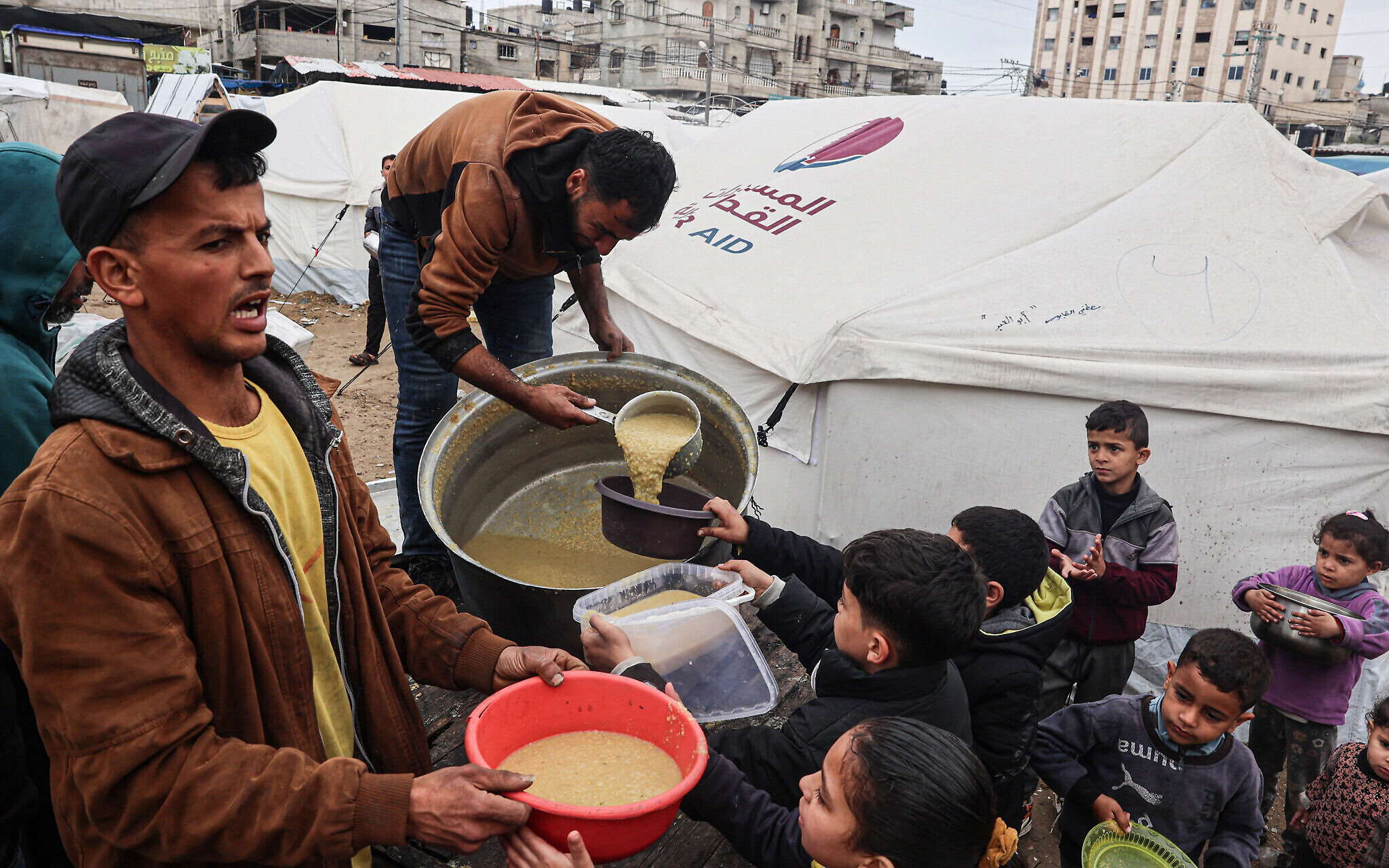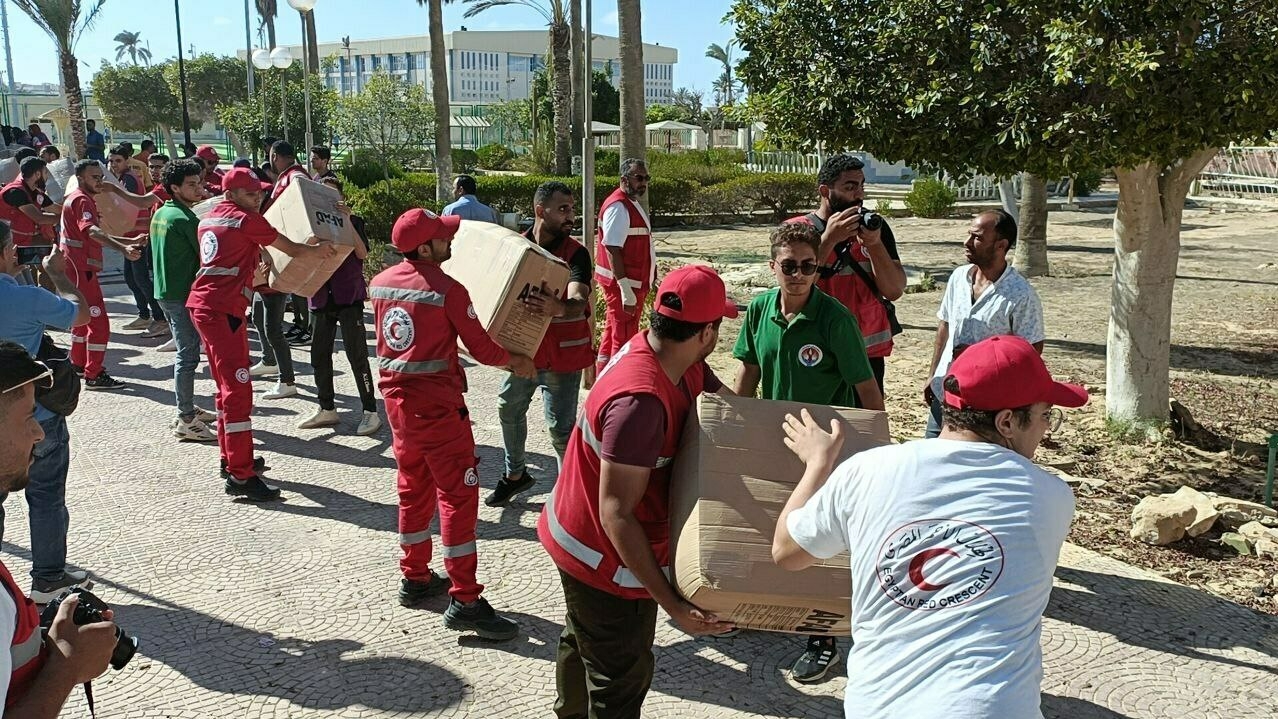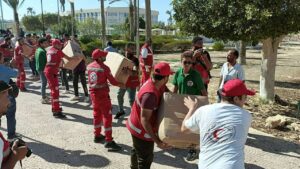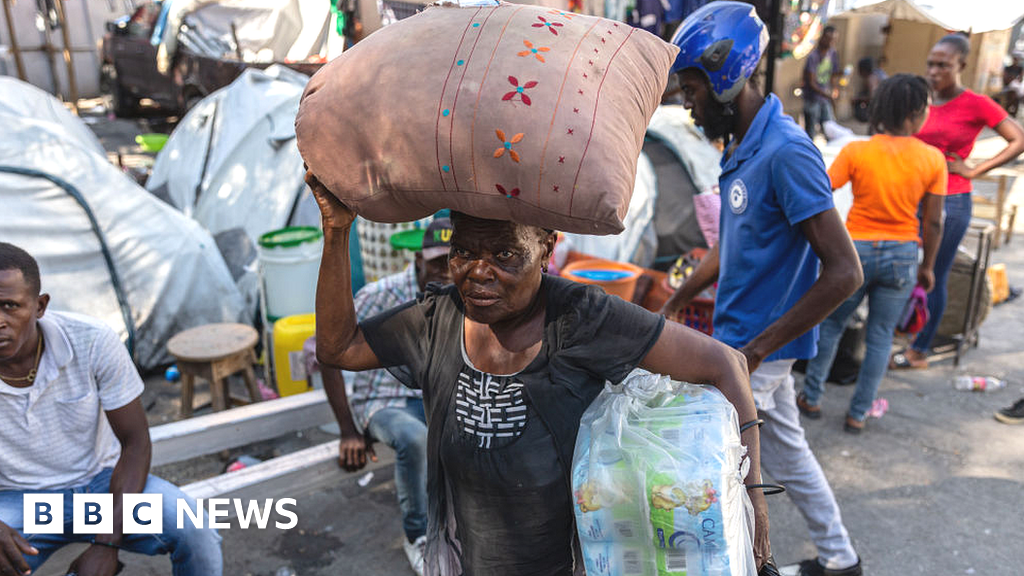The US has tapped a little-known private firm, Fogbow, to help manage distribution on the ground in Gaza.

The humanitarian crisis in Gaza has been a focal point of international concern for decades, characterized by recurrent conflicts, economic blockades, and severe restrictions on movement and goods. The recent escalation of tensions and violence has exacerbated an already dire situation, prompting the United States to devise a comprehensive plan to deliver food and essential supplies to Gaza by sea. This initiative, while fraught with logistical, political, and security challenges, aims to address the acute humanitarian needs of the Gazan population and to provide a sustainable model for future aid deliveries.
Background and Context
Gaza, a narrow strip of land bordering Israel and Egypt along the Mediterranean Sea, is home to approximately two million Palestinians. Over the years, it has faced extensive infrastructure damage, economic collapse, and a severe shortage of basic necessities due to prolonged blockades and repeated military conflicts. The blockade, imposed by Israel and Egypt, has significantly restricted the flow of goods and people into and out of Gaza, leading to widespread poverty, unemployment, and food insecurity.
In response to the escalating humanitarian crisis, the international community, including the United States, has sought alternative ways to provide aid to the Gazan population. Traditional land routes have often been obstructed due to security concerns and political tensions, making sea routes a potentially viable alternative for delivering humanitarian aid.
The US Plan: Objectives and Strategy
The primary objective of the US plan is to ensure a steady and reliable supply of food and essential goods to Gaza, mitigating the impact of the blockade and alleviating the humanitarian crisis. The strategy involves several key components:
1. Diplomatic Engagement and Coordination: Engaging with regional stakeholders, including Israel, Egypt, and international organizations, to secure cooperation and ensure the safe passage of aid shipments.
2. Maritime Logistics and Infrastructure: Establishing secure and efficient maritime routes for the transport of goods from international ports to Gaza, including the use of specially designated ships and port facilities.
3. Humanitarian Partnerships: Collaborating with international and local NGOs, UN agencies, and other humanitarian organizations to coordinate the delivery and distribution of aid within Gaza.
4. Security Measures: Implementing stringent security protocols to protect aid shipments from potential threats, including naval escorts and monitoring systems.
Diplomatic Engagement and Coordination
Diplomatic engagement is the cornerstone of the US plan. Securing the cooperation of key regional actors is crucial for the success of the initiative. The US has been actively engaging in diplomatic discussions with Israel and Egypt, emphasizing the humanitarian nature of the mission and the need for unimpeded access to Gaza.
Israel, which controls the maritime blockade around Gaza, has expressed concerns about potential security threats posed by the influx of goods. To address these concerns, the US has proposed a comprehensive inspection regime, whereby all aid shipments would be thoroughly inspected at designated ports before entering Gaza. This inspection process aims to ensure that only humanitarian goods reach the territory, alleviating Israeli security concerns.
Egypt, which controls the southern border of Gaza, has also been a key player in the negotiations. The US has sought to secure Egypt’s cooperation in facilitating the safe passage of aid ships through its territorial waters and in providing logistical support for the initiative.
In addition to regional actors, the US has engaged with international organizations, including the United Nations and the European Union, to garner broad support for the plan. These organizations can provide critical logistical and financial assistance, as well as lend credibility to the initiative on the global stage.
Maritime Logistics and Infrastructure
The logistical aspect of the US plan involves the establishment of a reliable maritime supply chain to Gaza. This includes identifying suitable ports of origin, securing vessels for transport, and ensuring that Gaza’s port facilities can accommodate the incoming shipments.
1. Ports of Origin: The US has identified several international ports, including those in Cyprus, Greece, and Turkey, as potential points of departure for aid shipments. These ports are strategically located to facilitate efficient sea routes to Gaza.
2. Transport Vessels: Specialized vessels, equipped to handle large quantities of food and essential goods, are being chartered for the mission. These ships are selected based on their capacity, speed, and ability to navigate the relatively shallow waters near Gaza’s coast.
3. Port Facilities in Gaza: Gaza’s port infrastructure has been severely damaged over the years, limiting its capacity to receive large shipments. The US plan includes provisions for temporary docking facilities and unloading equipment to ensure that aid can be efficiently offloaded and distributed. Additionally, efforts are being made to rehabilitate and expand Gaza’s port facilities to enhance long-term capacity.
Humanitarian Partnerships
The success of the aid delivery plan hinges on effective coordination with humanitarian organizations. The US has been working closely with international NGOs, such as the International Committee of the Red Cross (ICRC), Medicines Sans Frontiers (MSF), and local Palestinian NGOs to ensure that aid reaches those in need.
1. Coordination Mechanisms: Establishing robust coordination mechanisms is essential to streamline the distribution of aid. The US has proposed the creation of a central coordination center, staffed by representatives from various humanitarian organizations, to oversee the logistics and distribution process.
2. Distribution Networks: Local NGOs and community organizations play a critical role in distributing aid within Gaza. These organizations have the local knowledge and networks needed to ensure that aid reaches vulnerable populations, including those in remote and hard-to-reach areas.
3. Monitoring and Evaluation: To ensure transparency and accountability, the US plan includes provisions for monitoring and evaluation of the aid delivery process. Independent observers and third-party auditors will be tasked with overseeing the distribution of aid and ensuring that it reaches the intended recipients.
Security Measures
Ensuring the security of aid shipments is a paramount concern, given the volatile security situation in and around Gaza. The US plan includes several measures to mitigate potential risks:
1. Naval Escorts: To protect aid ships from potential attacks, naval escorts provided by the US Navy and allied forces will accompany the vessels during their journey to Gaza. These escorts will be equipped to respond to any security threats and ensure the safe passage of the ships.
2. Inspection Regime: All aid shipments will undergo thorough inspections at designated ports of origin. These inspections, conducted by international experts, aim to ensure that no prohibited items or materials are included in the shipments. This regime addresses security concerns and builds trust among regional actors.
3. Surveillance and Monitoring: Advanced surveillance and monitoring systems, including satellite imagery and drone technology, will be used to monitor the maritime routes and detect any potential threats. These systems provide real-time intelligence and enhance situational awareness for the naval escorts and aid ships.
Challenges and Obstacles
While the US plan to deliver food and aid to Gaza by sea is comprehensive, it faces several significant challenges and obstacles:
1. Political Resistance: The political landscape in the region is highly complex, and securing the cooperation of all relevant stakeholders is a formidable task. Any perceived infringement on sovereignty or security could lead to resistance from regional actors.
2. Logistical Constraints: The logistical challenges of transporting large quantities of aid by sea are substantial. Ensuring the timely and efficient delivery of aid requires meticulous planning and coordination.
3. Security Threats: The volatile security situation in Gaza poses a constant threat to aid shipments. Ensuring the safety of the vessels and their cargo requires robust security measures and constant vigilance.
4. Humanitarian Needs: The scale of the humanitarian crisis in Gaza is immense, and addressing the immediate needs of the population is only one part of the solution. Long-term efforts to rebuild infrastructure, stimulate the economy, and improve living conditions are essential for sustainable recovery.
Conclusion
The US plan to deliver food and essential supplies to Gaza by sea represents a significant effort to address the acute humanitarian needs of the Gazan population. While the initiative faces numerous challenges, it offers a viable alternative to traditional land routes and has the potential to alleviate the impact of the blockade.
Through diplomatic engagement, strategic planning, and robust coordination with humanitarian organizations, the US aims to establish a sustainable and reliable supply chain to Gaza. The success of this initiative depends on the cooperation of regional actors, the efficiency of logistical operations, and the effectiveness of security measures.
Ultimately, the plan underscores the importance of international solidarity and cooperation in addressing humanitarian crises. It highlights the need for innovative solutions and collaborative efforts to provide relief to vulnerable populations and to promote peace and stability in the region.
#plan #food #Gaza #sea





